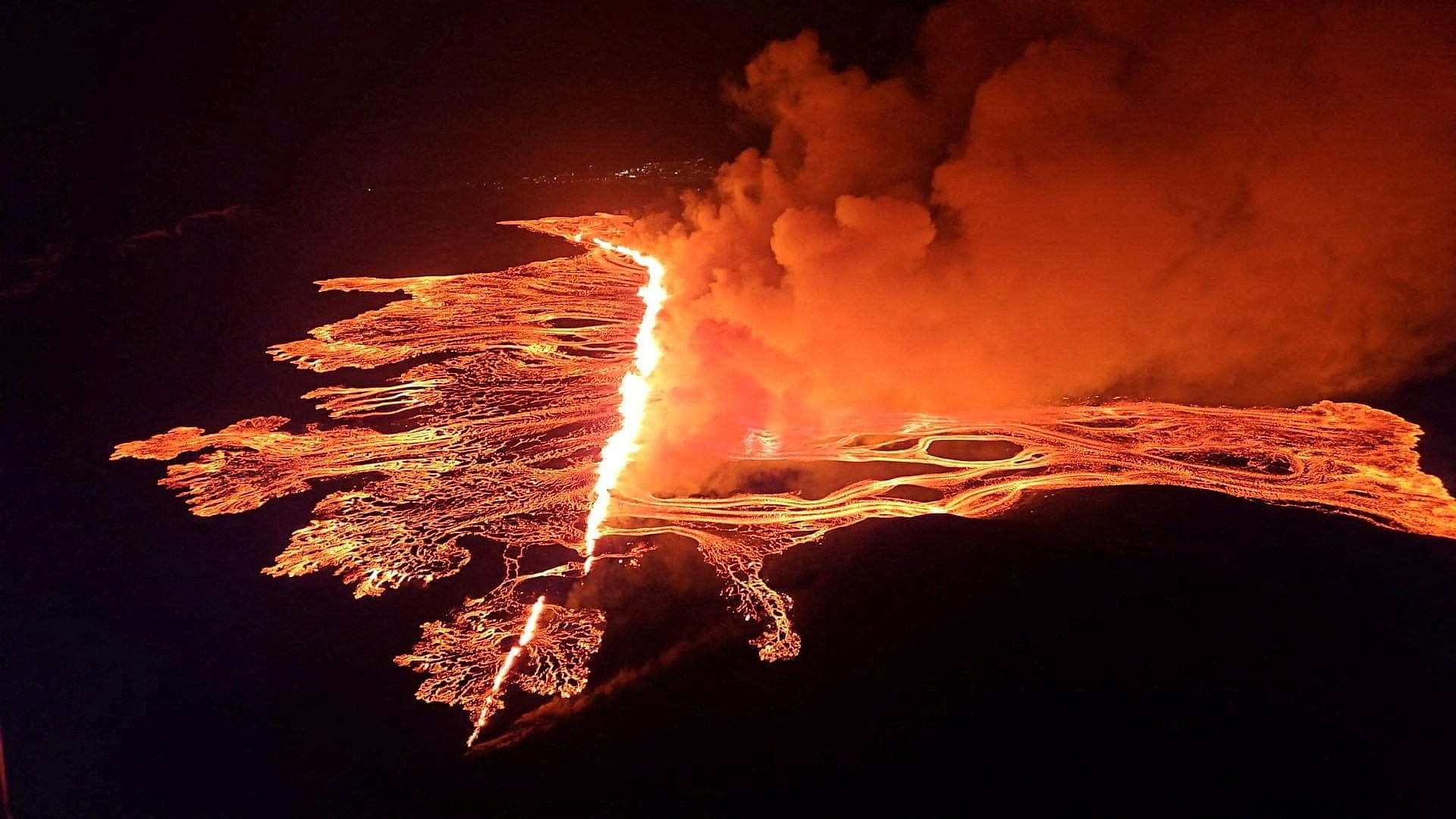
A volcanic eruption in Iceland.
Credit: Reuters Photo
Copenhagen: Iceland's Reykjanes peninsula has seen a string of volcanic eruptions since 2021 when geological systems dormant for around 800 years became active again.
Experts say the region, just south of the capital Reykjavik and home to 30,000 people, could experience so-called fissure eruptions repeatedly for several centuries.
Following is a timeline of recent eruptions:
March 16, 2024
The latest eruption took place between the Hagafell and Stora-Skogfell peaks in the same area as the last one the previous month, with smoke, molten rock and bright orange lava spewing from an estimated 3 km (2 mile) fissure.
Residents from the nearby fishing town of Grindavik who had returned from the previous evacuation left again immediately. The Blue Lagoon luxury geothermal spa again shut its doors.
February 8, 2024
This eruption lasted roughly a day, with lava spewing 80 meters (260 feet) high from a 3 km crack.
Lava flows damaged pipelines after which hot water supply used to warm homes was cut off during freezing winter temperatures. The Blue Lagoon closed after lava covered a road.
January 14, 2024
The eruption lasted two days, and the lava flow reached the outskirts of Grindavik, home to nearly 4,000 inhabitants, setting three houses alight.
December 18, 2023
An eruption in the Svartsengi volcanic system near Grindavik sent lava and smoke across a wide area after weeks of intense earthquake activity. A roughly 4 km (2.5 mile) long crack in the ground stretched towards Grindavik.
July 10, 2023
The small eruption of the Litli Hrutur volcanic system, some 60 km (37 miles) from the capital, resulted in gas pollution from lava, though it was far from any densely populated areas.
August 3, 2022
The three-week eruption in the Fagradalsfjall volcanic system started after days of earthquake activity. Due to poisonous gases, tourists and residents were asked to avoid the area and a "code red" stopped airplanes flying over the site.
March 19, 2021
Lava fountains erupted from a 500 to 750 meters (1,640 to 2,460 feet) long fissure in the Fagradalsfjall system. Volcanic activity in the area continued for six months, prompting thousands of tourists to visit.
More than 40,000 earthquakes occurred on the peninsula in the month leading up to the eruption, a huge jump from the 1,000-3,000 earthquakes each year since 2014.